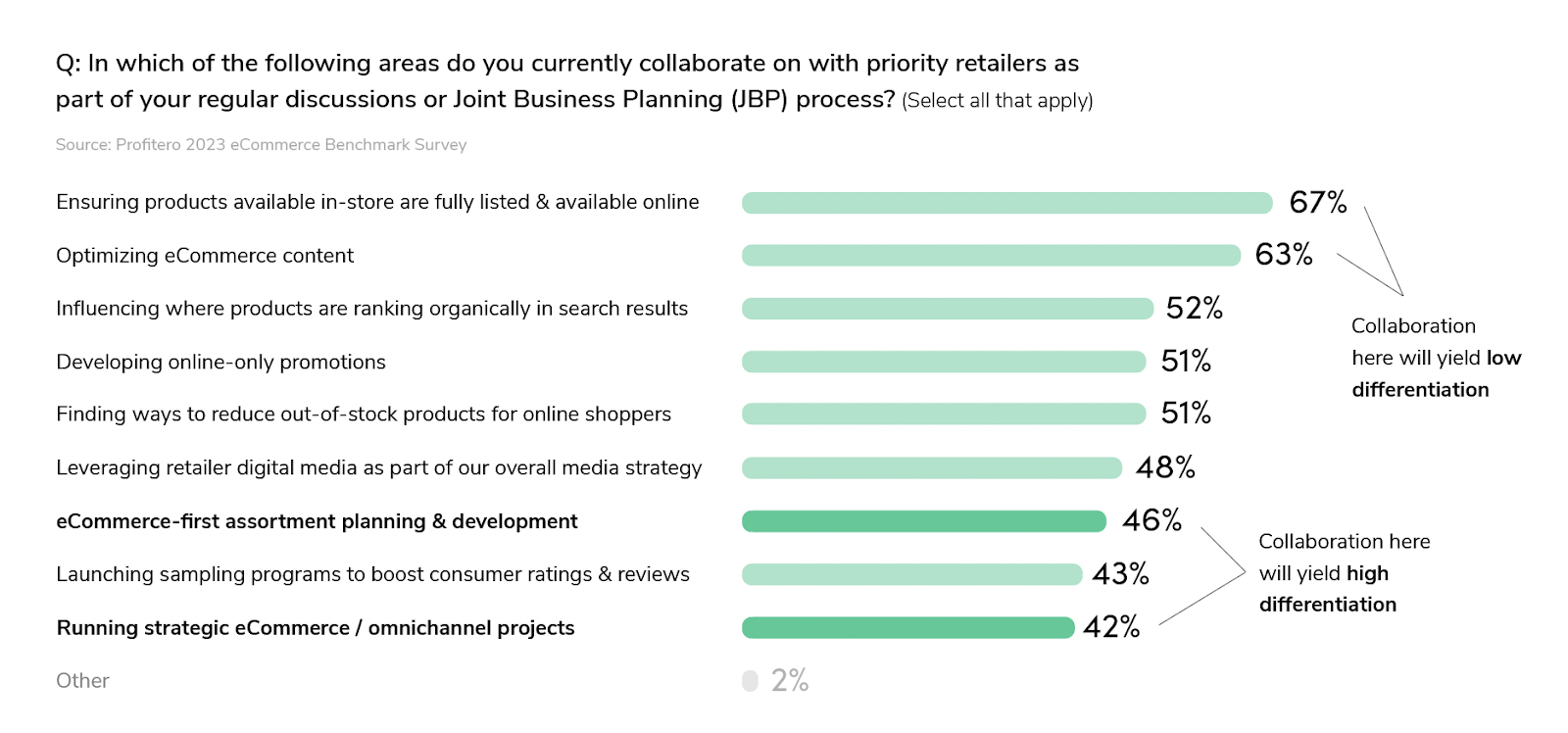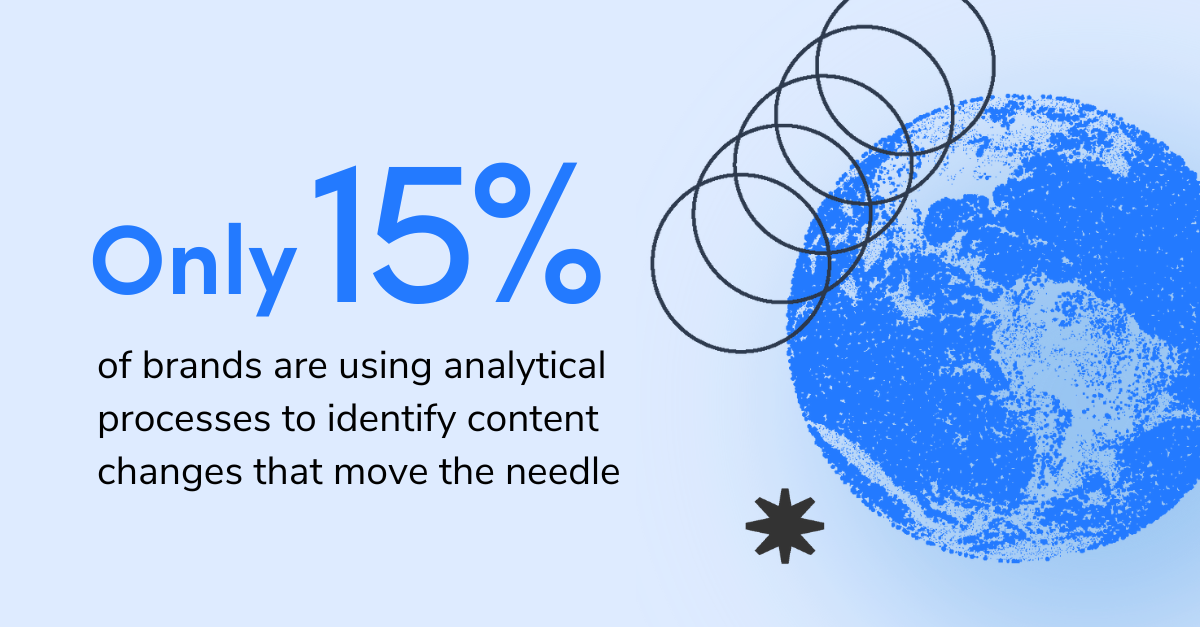
Profitero partnered with My Digital Shelf on February 8 to host a webinar unpacking the challenges and opportunities facing FMCGs this year. William Grant’s Cliodhna Lamont and Follow the Consumer’s Anh-Mai Vu joined us to provide direction for brands as they build towards eCommerce success in 2024. (Click here for the on-demand webinar recording.)
Our Digitally Influenced Shopper report, a survey of shopper behaviours across 4 countries, found that today’s shoppers are truly omnichannel: 65% of UK shoppers and 41% of DE shoppers are influenced by digital touchpoints, and consumers regularly consult the digital shelf as part of the pre and in-store purchase journey:

These digitally influenced shoppers pose a challenge to brands operating with traditional silos between eCommerce and brick-and-mortar teams. To win over today’s consumers, brands need eComm-savvy teams, data sources and ways of working.
Our latest eCommerce Benchmark Report found that brands are making some progress by hiring for dedicated eCommerce roles, but they’re struggling to upskill cross-functional teams: only 16% reported that their teams understood eCommerce best practices.
Our two guests, Cliodhna and Anh-Mai, are familiar with these challenges and shared a number of insights on how brands can accelerate their progress by balancing ownership between global and local teams, forging effective retailer partnerships, and creating success stories that secure critical buy-in from leadership.
In the early stages of eCommerce maturity, the eComm center of excellence will need to shoulder the burden of driving understanding and excitement across the organisation regarding the growth opportunity that eComm represents for the wider business.
A good first step is to pilot small-scale adoption of digital shelf tools to track intuitive KPIs – Anh-Mai suggests starting with main image compliance, product title compliance, assortment, and availability. The eComm team can then create a case study demonstrating how tracking these KPIs helped the team drive better outcomes and estimating the potential uplift of rolling out digital shelf analytics at a wider scale. Concrete success stories can be the key to securing leadership buy-in and more budget.
The global team’s role in adoption of digital shelf monitoring doesn’t end with securing investment. Anh-Mai has found that even when investment is growing, teams are struggling to adopt the data and create insight-driven action plans.
Why is this? Local teams are typically overwhelmed with day-to-day tasks and often struggle to find the time to monitor additional data sources. The eComm CoE needs to establish KPIs (such as eCommerce net sales) that incentivise local teams to examine the digital shelf data for insights on sales drivers. They’ll also need to guide teams on how to create action plans based on those insights.

A critical element of these action plans involves creating workflows that channel data to the relevant teams – for example, ratings & reviews insights for the marketing team and availability data for the supply chain team.
Cliodhna has found that changing perception and behaviours requires more than a standalone training: the global eCommerce team should prioritise regular data share outs that create sustained excitement around eComm opportunities and the importance of digital shelf data.
Retailer partnerships are a win-win, but there’s often uncertainty and reluctance on both sides at the early stages of JBP maturity. Retailers are wary of sharing out data with brands, and local teams are often unequipped to make the business case for greater data sharing.
Cliodhna believes the global eComm CoE should take responsibility for prioritising which customers to target for JBP building. They should also equip local teams to have productive conversations with those retailers and establish ways of working. Ultimately, though, the relationship should be owned and nurtured by the local teams.
Setting up local teams for JBP success with the right priority customers is the critical foundation that allows for bidirectional sharing of category and brand insights that build trust. Once the relationship is established, brands can start to access better data, help drive new site features, and collaborate on strategic projects that differentiate them from the competition.

Anh-Mai notes that greater efficiency is another major benefit of established JBPs – armed with more granular data, brands can begin to understand which changes to content and assortment truly drive sales growth and prioritise those specific levers – something only 15% of brands do.

Profitero is the trusted partner for brands at all stages of their omnichannel maturity journey, with an end-to-end system that connects data, insight & action to accelerate your growth. With Profitero, you’ll get accurate digital shelf insights across 1200+ retailers that empower you to guide your teams to the next best actions and go faster with shelf-intelligent automation and AI.

Looking for a guiding hand? Our global Advisory team works with leading brands to identify their critical capability gaps across their people, partnerships and practices – and craft custom action plans to address them. If you’d like to see your brand lead the way this year, reach out to schedule a meeting.



